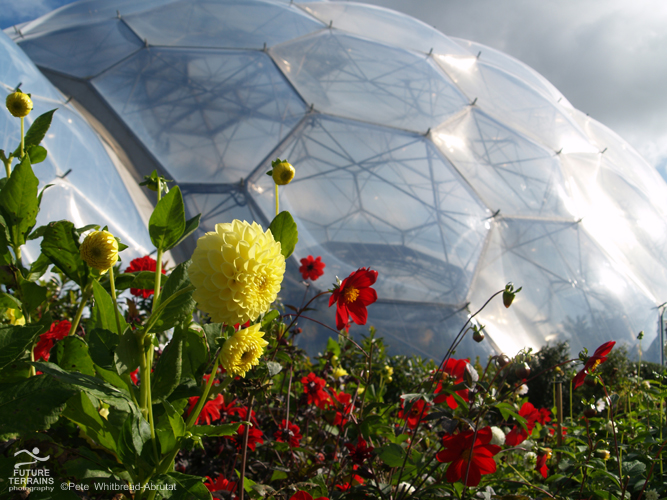All mining operations are unique and impressive responses to their particular contexts; consequently all mine closure projects are unique too – there is no standard formula or check-list for delivering them. What happens at and after closure is an important factor in determining how successful a mine has been in converting mineral assets to sustainable benefits to society.
Although closure practice is advancing, improvements are slow and patchy and, despite the regulation, standards and guidance available, it is apparent that many mine closure projects fall short in delivering on expectations, namely: that future public health and safety are not compromised; the site after-use is beneficial and sustainable to the affected communities in the long term; and adverse socio-economic impacts are minimised and socio-economic benefits are maximised.
Restoring degraded landscapes (and ecosystems) is a powerful way to rebuild ecological integrity and enhance the lives and livelihoods of people connected with them, for the long term. It is by considering a mine within a broader landscape context that closure and restoration projects deliver the scale of environmental and socio-economic improvements that will contribute significantly to the provision of ecosystem services and the development of meaningful, long-term livelihood opportunities.
 Non-mining landscape restoration initiatives offer a great deal of opportunity for developing mine closure thinking and practices. Much of the thinking behind this article is expanded in the report, Exploring World Class Landscape Restoration, as part of a project funded by the Winston Churchill Memorial Trust, in which I researched and visited a range of significant landscape restoration projects – including several major mining projects – in order to develop generic and progressive approaches towards good practice in this field.
Non-mining landscape restoration initiatives offer a great deal of opportunity for developing mine closure thinking and practices. Much of the thinking behind this article is expanded in the report, Exploring World Class Landscape Restoration, as part of a project funded by the Winston Churchill Memorial Trust, in which I researched and visited a range of significant landscape restoration projects – including several major mining projects – in order to develop generic and progressive approaches towards good practice in this field.
I define landscape restoration as the improvement of degraded land on a large scale that rebuilds ecological integrity and enhances people’s lives. Key aspects of this definition are that landscape restoration activities should:
1. Improve degraded environments through rebuilding ecological integrity by reducing or reversing degradation pressure; reintroducing missing or declining biodiversity; connecting disconnected landscape elements; involving a mosaic of ecological habitats, communities, land uses and interest groups; ensuring that communities and habitats are enhanced by the restoration programme; and stimulating development of a self-sustaining system.
2. Operate on a large (temporal/ areal) scale by recognising that landscape-scale projects consist of smaller projects, which should be encouraged as they are easier to conceptualise, fund and deliver; encouraging smaller projects to collaborate so that the beneficial impacts are scaled up; considering the landscape beyond its geographical confines to offer new opportunities for communities and habitats outside the immediate scope of the programme in question; considering trends in ecological and socio-economic systems, including climate change impacts, human migration patterns, changes in land use, etc.; working within a holistic, sustainable development framework; and taking a long-term perspective – generations, decades, centuries.
3. Enhance people’s lives by creating related employment; building local capacity; improving local quality of life; incorporating local aspirations into a landscape vision; and continuing the human narrative of the landscape by engendering a sense of place and reaffirming cultural identity.
Typically the common generic challenges in mine closure and landscape restoration projects revolve around participation, governance, and sustainability. A fourth category, called “The Oil in the Machine” consists of cross-cutting challenges and issues that need to be addressed to ensure success. These are expanded upon further below, with detail provided in Exploring World Class Landscape Restoration and in the Mine Closure 2013 paper by Whitbread-Abrutat et al., Lessons for the mining industry from non-mining landscape restoration experiences.
Participation
Meaningful stakeholder participation leads to better informed restoration activities, thus justifying the additional time and resources required in ensuring greater participation. Essential participants are the mining company and communities and the stakeholders local to the project, as the greater the degree of participation, the greater the sense of ownership. However, there may also be a requirement for upfront investment in capacity building in the short term.
Not engaging local communities should not be an option, but it is not always easy; they may be isolated geographically and independently minded, or they may have been previously overlooked or blamed for environmental damage to satisfy pressing needs when wider society offered no alternative. They may feel disenfranchised, apathetic, insular, independent and wary of outsiders. Poor previous consultation experiences persist in the collective memory, leading to distrust and a lack of constructive engagement. Cultural and language differences and poor education can be further barriers to engagement and may be compounded by a lack of capacity. Such communities are not uncommon in degraded lands. Key elements include: involving stakeholders – particularly local communities – for the long term, building constituencies and working to change perceptions.
Governance
Paying attention to the details of how the closure project and its aftermath are governed can greatly improve outcomes and attract further funding and in-kind contributions leading to greater project sustainability. Good governance ensures that long-term project viability goes beyond simply restoring and walking away and is essential for delivering long-term socio-economic benefits. In this sense, good governance includes clear decision making, financial/ fiduciary responsibilities, efficient administration and transparency. Decision-making should be guided by principles established from the outset. Critically, the governing body should facilitate the regular monitoring and evaluation of project activities ensuring that quality is maintained and funds are spent wisely. Important aspects include: controlling the land, leveraging funding, developing project goals, surmounting institutional barriers, and influencing policy and legislation.
Sustainability
A key challenge faced by any mining community – and the crux of the mining and sustainable development debate – is how to convert values from the mine’s finite natural resource to long-term community benefits that persist beyond closure. The nexus of that challenge arrives when a mine closes, by when it is too late to consider implementing meaningful community development programmes. As with progressive restoration during the operational phase, a well-considered community development programme during the mine life will ease the path to closure, lessening the impacts when the day finally arrives.
The advent of closure should preface a smooth transition between mining and post-mining for stakeholder and local community participation and project governance, rather than necessitate the need to initiate these, or deliver wholesale changes in a forced time-frame. This would include incorporating changes to governing bodies to increase stakeholder participation over time and develop funding and project management and delivery mechanisms that can persist without support from the company. Increasing stakeholder participation over time may also require investment in capacity building prior to a formal handover of the project to new ‘owners’. Evidently, such planning for closure is required well in advance of the event actually happening and, ideally, should be an objective from the start. Key elements include: empowerment and capacity building, scaling, addressing invasive species and reinventing the wheel.
“The Oil in the Machine”
Delivering best practice mine closure needs to be about much more than ticking a checklist of stages and processes; it is an organic thing built on human relationships and evolving over years/ decades with changing personal circumstances, societal expectations and personalities. Inevitably, unpredictable events and opportunities occur that will need to be carefully considered and reacted to. The more flexibility and adaptability engrained in a project’s modus operandi and collective philosophy, the more durable and ultimately successful it will be. There are several cross-cutting themes that are critical to every successful project everywhere, which I call, for want of a better term, ‘the oil in the machine’. The key elements are leadership, communication, collaboration, knowledge, creativity and beauty, and culture.

Florida’s ambitious multi-billion dollar Everglades restoration programme offers many potential lessons and approaches for improving mine closure practices.
To conclude; ultimately change is required in the conventional template to which most mine closure plans are produced and the process behind them. The plan should outline the strategy that creates the foundation upon which to build a new environmental and socio-economic future for the surrounding communities. Modified guidance is also required that encourages a more progressive approach towards realising potential opportunities arising from closure. As much detail should be provided on the participation, governance, sustainability and “oil in the machine” issues as on the technical reclamation aspects, and should involve a much wider range of experts and stakeholders that is the norm.
After all, a mine and its people and context can only ever be a chapter in the narrative of a landscape. It is incumbent on those connected with the mining industry to ensure that the end of a mine signals the start of a new chapter and not the end of the story.
#MineClosurePerspectives is produced in support of the international conference Mine Closure 2014 – and this is the final #MineClosurePerspectives posting in the current series. The theme will continue, however, with occasional blogs in the future and postings of relevant material @FutureTerrains.
Building Understanding is one of four Future Terrains service areas for tackling the challenge of degraded lands.



